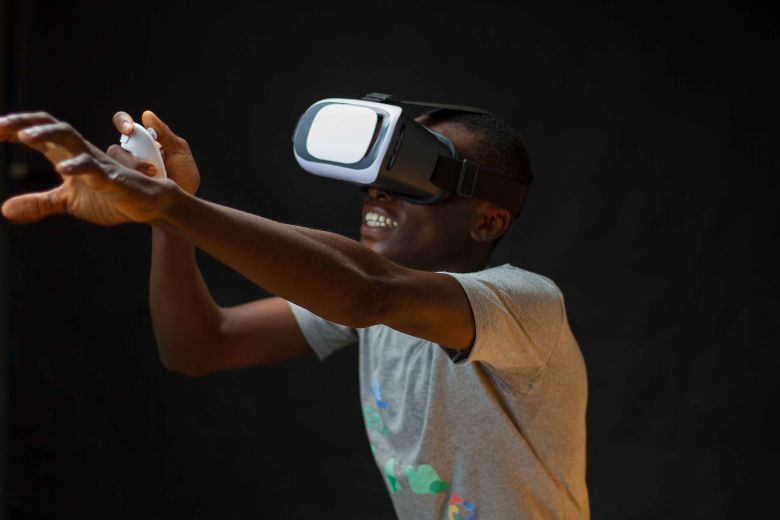The Impact of Augmented Reality on Education and Training
Table of Contents
Augmented Reality (AR) has emerged as a transformative technology with the potential to revolutionize education and training. By overlaying digital content in the real world, AR bridges the gap between the physical and virtual realms, creating immersive learning experiences. In this article, we explore the impact of AR on education and training, uncovering its advantages, challenges, and future implications.
Understanding Augmented Reality (AR)
Before delving into its applications, it’s essential to understand what AR is. Augmented Reality is a technology that superimposes computer-generated images, videos, or information onto the user’s view of the real world. Unlike Virtual Reality (VR), which creates entirely artificial environments, AR enhances the real environment.
The Rise of Augmented Reality in Education
3.1. AR in Classroom Instruction
AR has found its way into traditional classrooms, adding a new dimension to the learning process. Teachers can use AR applications to illustrate complex concepts visually, making it easier for students to grasp abstract ideas.
3.2. Enhancing Learning Experiences with AR
Beyond the classroom, AR enriches learning experiences through interactive elements. Museums and historical sites can leverage AR to bring exhibits to life, providing a more engaging and informative journey for visitors.
Advantages of Augmented Reality in Education and Training
4.1. Hands-On Learning Opportunities
AR enables hands-on learning experiences that were previously unattainable. Students can interact with virtual objects, conduct virtual experiments, and explore real-world scenarios in a controlled environment.
4.2. Fostering Student Engagement
The interactive nature of AR captures students’ attention, leading to increased engagement and participation. This higher level of involvement can lead to better retention of information.
4.3. Personalized Learning Paths
AR technology can adapt to individual learning styles and paces, creating personalized learning paths. This customization ensures that each learner receives the most effective educational experience.
Implementing Augmented Reality in Training Programs
5.1. AR for Employee Onboarding
Companies are integrating AR into their onboarding processes to familiarize new employees with the workplace, protocols, and procedures efficiently.
5.2. Upskilling and Reskilling with AR
AR-based training programs enable employees to acquire new skills or update existing ones, keeping them relevant in a rapidly evolving job market.
The Future of Augmented Reality in Education and Training
6.1. Bridging Gaps in Learning
AR has the potential to bridge gaps in education by offering access to resources and experiences that might otherwise be unavailable.
6.2. Accessibility and Inclusivity
AR can make education and training more accessible for learners with disabilities, providing equal opportunities for all.
Addressing Challenges and Concerns
7.1. Cost of Implementation
Despite its benefits, the cost of implementing AR in educational settings can be a barrier. Over time, as the technology matures, costs are likely to decrease.
7.2. Privacy and Security
AR applications must address privacy concerns, ensuring the protection of sensitive data and maintaining a safe learning environment.
Case Studies: Successful AR Integration in Education
8.1. AR Books for Young Learners
Children’s books enhanced with AR elements create interactive storytelling experiences, promoting literacy and imagination.
8.2. Medical Education with AR Simulations
Medical students can gain valuable experience through AR simulations, allowing them to practice medical procedures in a risk-free environment.
Augmented Reality and the Role of Teachers and Trainers
9.1. Teachers as Facilitators
In an AR-enabled classroom, teachers take on the role of facilitators, guiding students through their learning journeys.
9.2. Trainers as Learning Enablers
Trainers leverage AR to facilitate skill development and knowledge acquisition, encouraging a proactive approach to learning.
The Impact of AR on Traditional Educational Models
10.1. Shifting Classroom Dynamics
AR changes the dynamics of the classroom, encouraging collaborative learning and active participation.
10.2. Virtual Learning Environments
AR can create virtual learning environments, breaking down geographical barriers and expanding educational opportunities.
Ethical Considerations in AR Implementation
11.1. Addressing Bias and Representation
Developers must ensure that AR content is inclusive, representative, and free from bias.
11.2. Promoting Responsible AR Use
Educators and trainers should emphasize responsible AR use, encouraging critical thinking and discernment.
AR and Gamification: Learning through Play
12.1. Gamified Learning Experiences
By incorporating gamification into AR applications, learning becomes more enjoyable and motivating for learners.
12.2. AR and Educational Game Development
Educational game developers can harness AR’s potential to create immersive and impactful learning games.
Augmented Reality in Special Education
13.1. Inclusive Learning for All Abilities
AR fosters an inclusive learning environment for students with diverse learning needs.
13.2. Supporting Neurodiversity
AR can cater to various learning styles, supporting neurodiverse learners and promoting understanding and empathy.
AR in Vocational Training and Skill Development
14.1. Hands-On Practice in a Virtual Space
Vocational training programs can use AR to provide practical, hands-on experiences without the need for expensive physical equipment.
14.2. Enhancing Technical Training
AR aids in technical training, allowing learners to interact with complex machinery and systems in a safe virtual setting.
Conclusion
Augmented Reality is transforming the landscape of education and training, offering unprecedented opportunities for immersive, engaging, and personalized learning experiences. As AR technology continues to advance and becomes more accessible, its positive impact on education and training is bound to grow.
Get Access Now: https://bit.ly/J_Umma
FAQs
- What is Augmented Reality (AR)? Augmented Reality (AR) is a technology that superimposes computer-generated content onto the real world, enhancing the user’s view of the physical environment.
- How does AR benefit education? AR benefits education by providing hands-on learning opportunities, fostering student engagement, and enabling personalized learning paths.
- Can AR be used for employee training? Yes, AR is increasingly being used for employee training, offering efficient and interactive onboarding experiences.
- Is AR inclusive for learners with disabilities? Yes, AR can be made inclusive for learners with disabilities, offering equal educational opportunities.
- What challenges does AR implementation face? AR implementation faces challenges related to costs, privacy, and data security, but advancements in technology are likely to address these concerns over time.
- The Evolution of Smart Home Technology: Creating Connected Spaces


